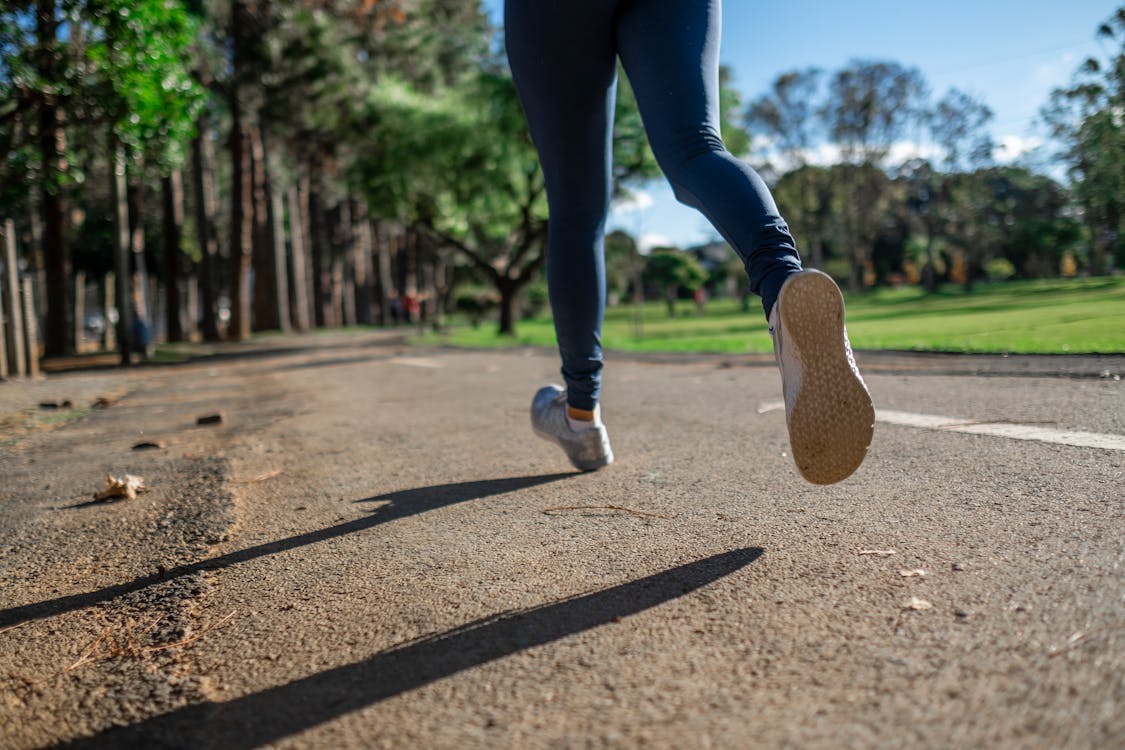I sometimes run for health purposes, but also to clear my head when everything goes to (excuse my language) shit. It’s tiring, yet freeing. I know more people start running in times of Covid, and so, I’m here to provide some tips for those who want to start!
- Short running intervals
Are you super excited to start your running workout? As a new runner, you shouldn’t plan on running the entire distance in one sitting. Divide it into intervals and try to keep them short at first. Don’t be ashamed to walk between the intervals so that you can recover a little. After some time, you can start to lengthen the running sections and reduce your walking: start by alternating 2 minutes of jogging and 2 minutes of walking. Increase your running intervals by one minute per workout until you can run the entire distance without walking.
2. Don’t out run too fast
Your body has to get used to the new tensions and strains while running. Many new runners start jogging too quickly and pay the price for this within minutes. Frustration, overexertion, pain or even injury are just some of the consequences. Therefore, start running at a moderate pace (i.e. where you can easily have a conversation). Even if you feel like cutting loose, you have to keep the same pace the entire distance. Only those who give their bodies time to gradually get used to the new demands will be successful in the long run.
3. Time to recover
Your first run went well and you want to get out again right away? But you have to wait a day before starting the next workout: your body needs to rest to recover from the first run. It has to adapt to the new demands of the cardiovascular system and prepare your muscles and bones for the next run. Plan your workout so that you run one day and rest the next. This simple training schedule can help new runners achieve the greatest training effect and avoid overuse injuries.
4. Run easy, take short steps
Running is a technically challenging sport. Many beginners lack the correct technique and make jogging more difficult than necessary by wasting a lot of energy. Your body develops the coordination it needs to perform the complex series of movements with every kilometer or mile you walk. Try to run relaxed and in good shape. Short, easy strides are more effective than long, powerful strides that act as a brake, slowing your forward momentum with each footstep.

5. Choose the surface
Running on asphalt pavement is ideal for fast running. There’s very little danger of twisting your ankle. However, it’s hard on your joints because the sidewalk doesn’t dampen your steps. That’s why running on this surface is only for very light runners in good shape. / A forest or park floor is soft and provides excellent cushioning. However, the risk of injury increases from roots, rocks and bumps. / A sandy surface trains your muscles and makes you lift your feet. But be careful as it’s easy to overexert your calf muscles. / Tartan (an all-weather synthetic track surface) is resilient. One drawback: it puts a lot of strain on your Achilles tendon. / With the treadmill you train all year round with good cushioning. However, this type of running workout requires you to adjust your form because the belt moves under your feet.
6. Side aches
Many people suffer from side stitches while jogging. Don’t eat anything solid for about two hours before your workout and only drink small amounts. If a side stitch does hit, take a break and walk. Breathe calmly and in a relaxed rhythm. Press your hands against the side that hurts. Don’t start running again until the pain is gone. (And only slowly after that).
7. Take care of your body
Have you just started running? Remember that running is a full-body workout. Your core is the control center. As a result, your arm swing affects every movement from your hips down, including stride length and cadence. To run for a long time, you need a strong, healthy, and stable core. The rest of your muscles also need to be in good shape so you can walk lightly on your feet. Plus, a well-conditioned body helps overuse and compensate for injuries. This applies to all parts of the body involved in running. Regular strength training improves running performance.
8. Cross train
Your heart likes variety, and doing different types of sports also reduces the stress on your joints and spine running. Plus, it keeps things from getting boring. And this helps keep your love of running alive.

Love, Deem/Skye Lewis ❤
You can also follow me on Facebook, Twitter, Instagram, Twitch and TikTok
Image source: Pexels

I hate running haha
LikeLiked by 1 person
I hear that a lot haha
LikeLike
Not my thing, but good tips though!
LikeLiked by 1 person
Glad to hear!
LikeLike
I run a lot with my dog, perfect way to exercise for us both!
LikeLiked by 1 person
Very true!
LikeLike
I appreciate this article 🙂
LikeLiked by 1 person
Glad to hear!
LikeLike
Not my cup of tea, I prefer cycling ^^
LikeLiked by 1 person
Which is fair!
LikeLike
I love going on a run, it’s so refreshing and gives me a good feeling afterwards!
LikeLiked by 1 person
Exactly that!
LikeLike
Good tips!
LikeLiked by 1 person
Good to hear!
LikeLiked by 1 person
Great advice here. I especially like the first, and possibly most important, to ease into it and split it up. Very important for new runners.
I always recommend people to go to trails as much as they can. Personally, I think the ground is softer for your joints and the ability of your stabilizing muscles to strengthen alongside the others. Just my opinion.
What are your thoughts?
LikeLiked by 1 person
Yeah, I think that could be a good idea, or maybe on the second run, to make sure they have a little bit more experience and feeling in those regards
LikeLiked by 1 person
Very well sad!!
LikeLiked by 1 person
Thank you!
LikeLiked by 1 person